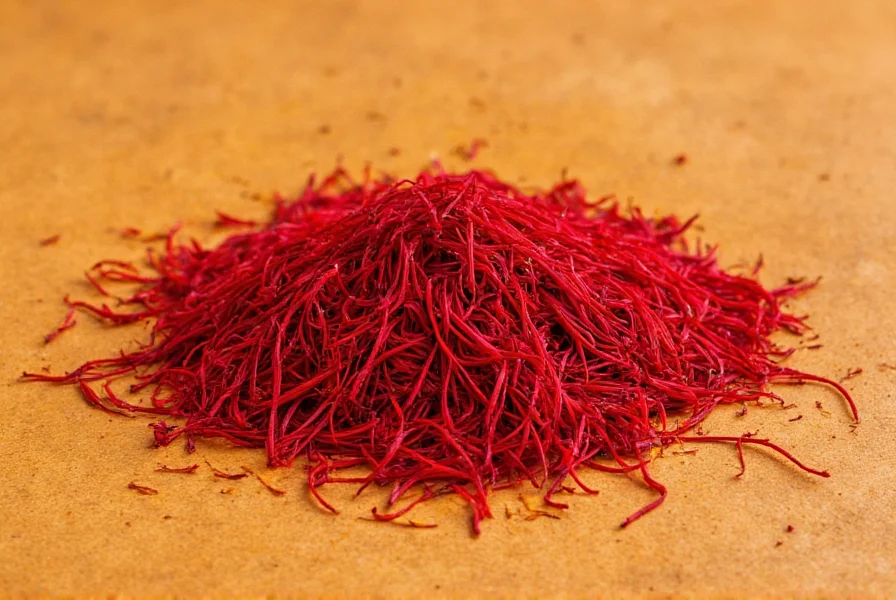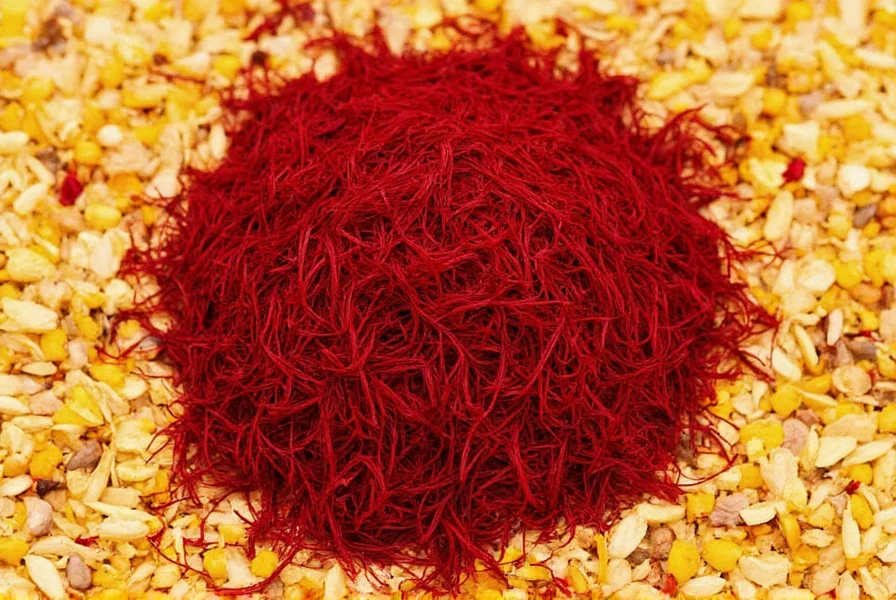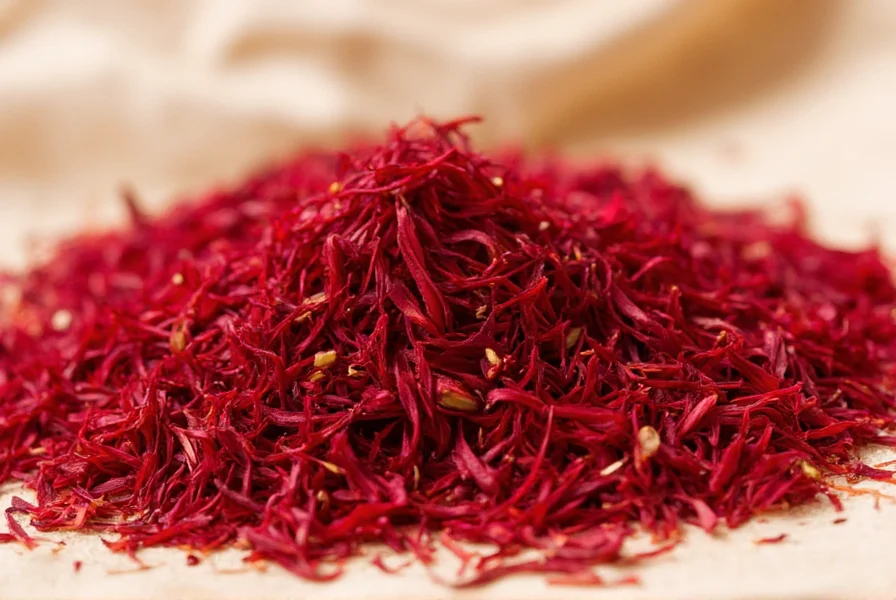Saffron's extraordinary cost isn't accidental—it's the direct result of biological constraints and human labor requirements that simply cannot be automated. Unlike most spices that grow on trees or bushes yielding substantial harvests, saffron comes from the Crocus sativus flower, specifically the three crimson stigmas within each bloom. These fragile threads require human hands for extraction because mechanical harvesting would destroy them. This biological reality creates an unavoidable bottleneck in production.
The Labor-Intensive Harvesting Process
Imagine this: farmers must rise before dawn when the purple crocus flowers are still closed to preserve the stigmas' quality. As the sun opens the blossoms, workers have mere hours to pluck each flower, rush to processing areas, and carefully extract the three red threads from every bloom using tweezers or fingernails. This precision work continues until mid-morning when heat degrades the threads' quality. The entire harvest window spans just three weeks each autumn, creating intense seasonal pressure.
Consider these staggering statistics that explain why saffron costs so much per ounce:
| Measurement | Flowers Required | Harvesting Time |
|---|---|---|
| 1 gram of saffron | ~150 flowers | 1-2 hours of labor |
| 1 ounce (28g) | ~4,200 flowers | 20-30 hours of labor |
| 1 pound (454g) | ~75,000 flowers | 400+ hours of labor |
Compare this to turmeric or cinnamon, where a single plant yields ounces of spice with minimal processing. Saffron's production defies economies of scale—no technological advancement can reduce the flower-to-thread ratio. This biological constraint makes why saffron is so expensive fundamentally different from other high-cost commodities.
Geographic and Climatic Limitations
Saffron cultivation requires very specific conditions that limit production to certain regions. The Crocus sativus thrives only in climates with hot, dry summers and cold winters—primarily Iran, Spain, India (Kashmir), and Greece. Iran alone produces over 90% of the world's saffron, creating supply chain vulnerabilities. Unlike vanilla or coffee that grow across multiple continents, saffron's narrow cultivation zone prevents significant production increases.
Each saffron crocus bulb produces just 1-3 flowers per season, and bulbs require annual replanting after 3-5 years as yields diminish. The plants need well-drained soil and cannot tolerate excessive moisture, further restricting suitable farmland. These factors contributing to saffron's high price create natural production ceilings that no amount of investment can overcome.

Quality Grading and Authentication Challenges
Saffron's value varies dramatically by quality grade, with ISO 3632 standards defining categories based on crocin (color), picrocrocin (taste), and safranal (aroma) content. The highest grade, Category I, requires crocin levels above 190 and commands premium prices. Unfortunately, saffron's high value makes it the world's most adulterated spice—up to 50% of commercial saffron contains fillers like safflower or turmeric.
This authentication challenge directly impacts pricing. Genuine Category I saffron requires rigorous testing and traceability, adding costs that explain why pure saffron threads cost significantly more. Consumers often pay premium prices for inferior products, creating market distortions that push authentic producers to higher price points to maintain viability.
Economic Realities for Saffron Farmers
Despite saffron's high retail price, farmers receive only a fraction of the final cost. In Iran, the world's largest producer, saffron farmers earn approximately $500-$700 per kilogram—substantial locally but representing just 15-20% of the international wholesale price. The remaining value goes to processors, exporters, and retailers. This economic structure means understanding saffron's true cost requires examining the entire supply chain.
Consider the seasonal nature of saffron farming: workers dedicate three intense weeks to harvesting but must find other income for the remaining 49 weeks. This irregular cash flow necessitates higher per-unit pricing to sustain farming communities year-round. Unlike continuous-harvest crops, saffron's economic model depends on maximizing value from a single annual harvest.
Market Dynamics and Historical Context
Saffron has maintained elite status since ancient times—it was valued more than gold in some historical periods. This cultural prestige creates inelastic demand from high-end restaurants and specialty food producers willing to pay premium prices regardless of cost. However, genuine market constraints drive the price more than prestige:
- Supply limitations: Global production averages just 250-300 metric tons annually
- Demand growth: Rising popularity in Western cuisine increases pressure on limited supply
- Climate vulnerability: Droughts in Iran have reduced harvests by up to 40% in recent years
- No viable substitutes: No other spice provides saffron's unique flavor and coloring properties
These factors create a perfect storm where the real cost of producing authentic saffron cannot decrease significantly without compromising quality. Attempts to increase production through expanded cultivation face biological and climatic barriers that maintain saffron's status as the ultimate luxury spice.

What This Means for Consumers
When you pay $20 for a single gram of saffron, you're not just buying a spice—you're compensating for 150 flowers hand-picked at dawn, processed within hours, and rigorously tested for authenticity. The price reflects biological reality, not corporate greed. Understanding why saffron remains expensive despite technological advances helps consumers appreciate its true value and avoid counterfeit products.
For home cooks, the good news is that a little saffron goes an extraordinary distance. A single gram properly prepared can flavor 20-30 dishes, making the per-serving cost quite reasonable. This concentration of value explains why professional chefs consider saffron worth the investment despite its sticker shock.
How much saffron can one crocus flower produce?
Each crocus flower yields only three delicate red stigmas, which become saffron threads after drying. It takes approximately 150 flowers to produce just one gram of saffron, explaining why the spice commands such high prices relative to its minuscule yield per plant.
Can saffron production be automated to reduce costs?
No, saffron harvesting cannot be automated due to the extreme delicacy of the stigmas. Mechanical harvesting would destroy the fragile threads, and the flowers must be picked at precise times during a narrow daily window. This biological constraint ensures saffron will remain labor-intensive and expensive regardless of technological advances.
Why is Iranian saffron cheaper than Spanish saffron?
Iran produces over 90% of the world's saffron with lower labor costs, while Spanish saffron (particularly La Mancha variety) carries premium pricing due to stricter quality controls, protected designation status, and higher production costs. However, genuine Spanish saffron often represents better value due to stricter authenticity standards compared to some Iranian imports.
How can I tell if saffron is authentic or adulterated?
Authentic saffron threads should be deep red with orange tips, release color gradually in warm water (not instantly), and have a distinctive hay-like aroma. Adulterated saffron often bleeds color immediately, contains yellow styles (not red stigmas), or has chemical odors. The most reliable test is the ISO 3632 laboratory analysis measuring crocin, picrocrocin, and safranal content.
Is saffron worth the high price for home cooking?
Yes, when used properly. A single gram of saffron (about $10-20) can flavor 20-30 dishes when correctly steeped. The unique floral-honey flavor and vibrant golden color it provides cannot be replicated by substitutes. For signature dishes like paella, bouillabaisse, or risotto alla Milanese, authentic saffron delivers distinctive culinary value that justifies its cost in small, measured amounts.











 浙公网安备
33010002000092号
浙公网安备
33010002000092号 浙B2-20120091-4
浙B2-20120091-4